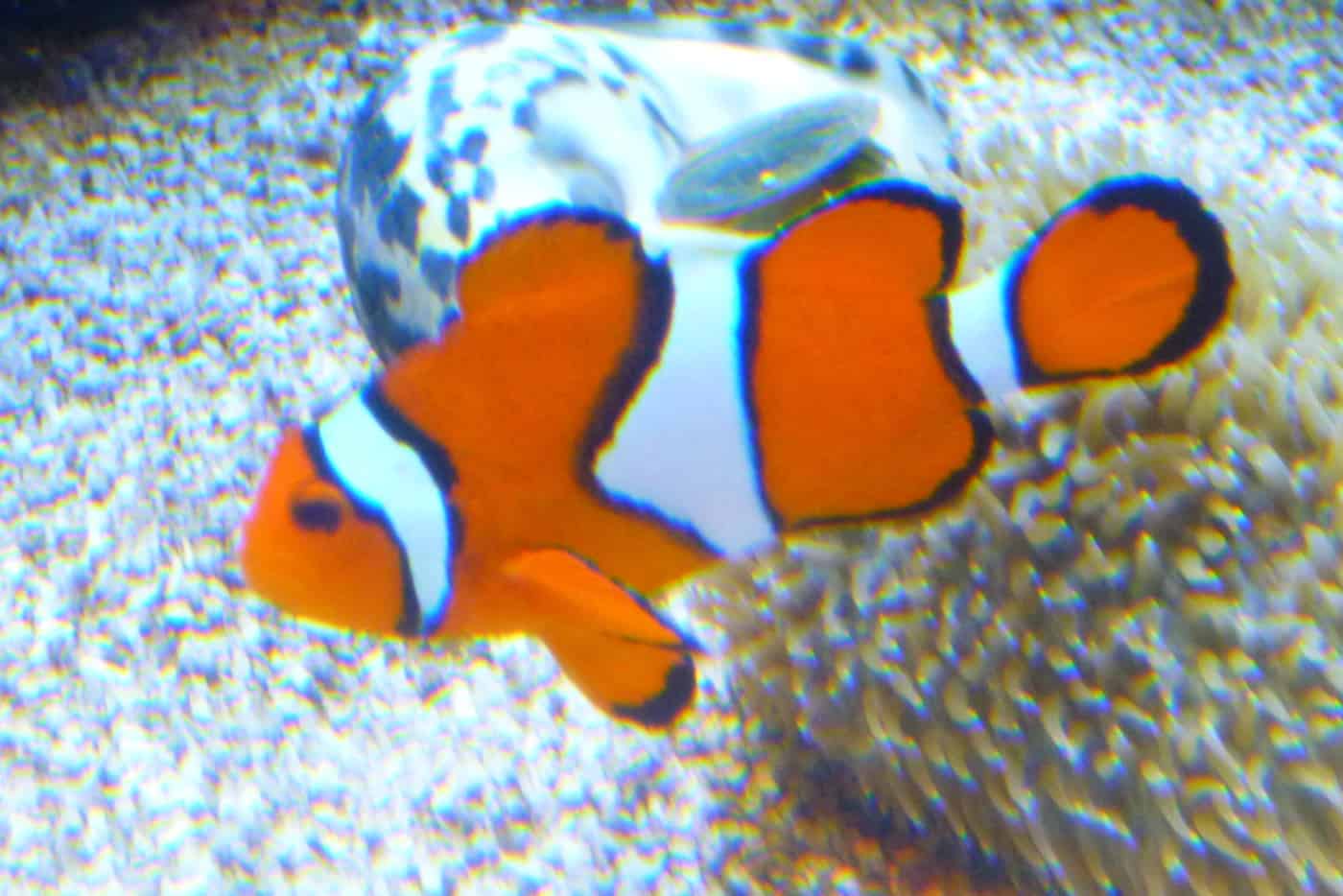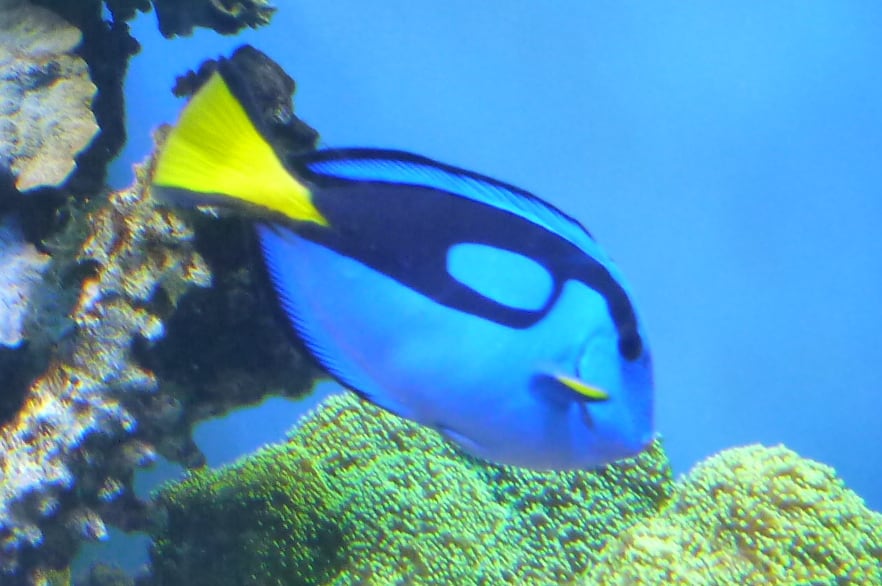This week’s fish is actually a pair that you’ll recognize: the Clownfish and Blue Tang
Clownfish (Amphiprion percula)

Blue Tang (Paracanthurus hepatus)

More commonly known as Nemo, Marlin & Dory, these two types of tropical fish are common in coral reefs.
Clownfish have several interesting characteristics. They live in anemones, kind of like upside-down jellyfish attached to the ocean floor. Anemones, which use their stinging cells to trap their prey, do not affect clownfish. The clownfish eat invertebrates that threaten the anemone and the anemone gets nutrients from the clownfish’s waste. Clownfish take good care of their anemone homes! Usually a group of clownfish will share an anemone home. The biggest clownfish in a group is the dominant female. The dominant male is next largest in size with a few smaller, non-breeding fish in the group. If the dominant female dies, the dominant male changes to a female and takes her place.
There are several species of blue tang. They are classified by their coloration and where they live. They blue tang associated with Dory is also known as the blue surgeonfish, regal tang, royal blue tang, and more. They are one of the most popular display fish in the aquarium world. They like to live in pairs or small groups. They have a prominent spine near the base of their tail that sticks out and can cause deep wounds.
Both fish are very common in aquariums. To find an aquarium near you, check out the Association of Zoos & Aquariums Website

Can Blue Tangs have symbiotic relationships with Anemones like clown fish do?
No, they do not, contrary to what you may see in popular films.